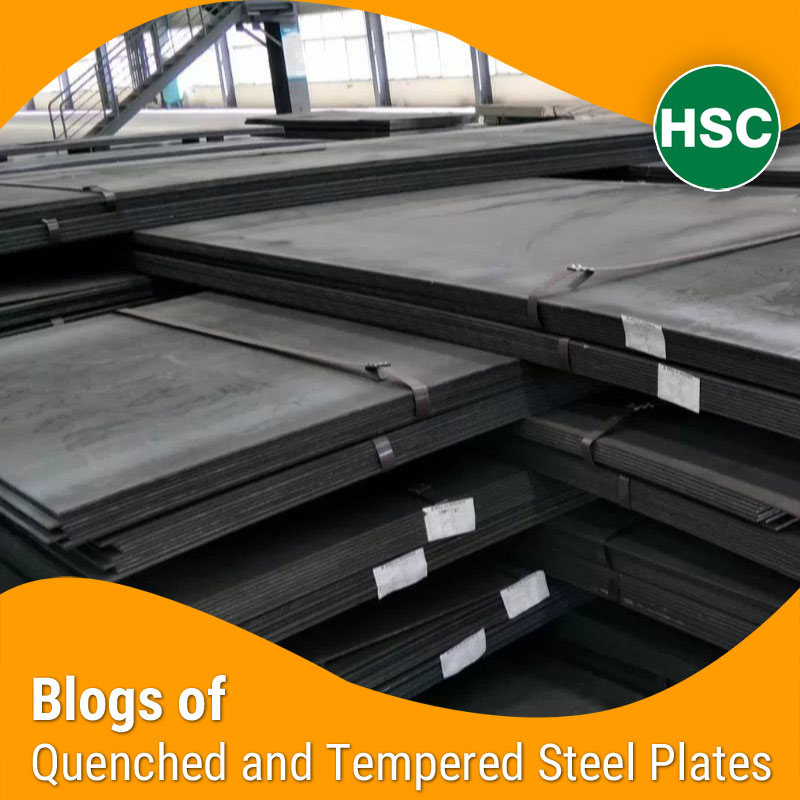Introduction – Why Know This?
When selecting steel plates for structural strength or wear resistance, one term often stands out — Quenched and Tempered (Q&T). But what exactly does it mean? How is it different from regular steel? And why do engineers and OEMs worldwide demand Q&T plates for high-impact projects?
This article breaks down the Q&T process, advantages, and use cases, making it easy for buyers, fabricators, and project managers to understand why it matters.
What is Quenched and Tempered Steel?
Quenched and Tempered Steel Plate is a type of high-strength steel that undergoes a two-stage heat treatment process:
- Quenching: Rapid cooling from a high temperature (usually by water or oil)
- Tempering: Reheating to a lower temperature and holding it for a period, then cooling again
This process drastically improves the steel’s hardness, strength, ductility, and toughness — resulting in a plate that can handle impact, pressure, and extreme fatigue.
It’s stronger than regular structural steel, yet easier to weld than alloy tool steels.
Key Benefits of Q&T Steel Plates
- High Yield & Tensile Strength: Often >700 MPa
- Better Fatigue Resistance: Ideal for vibration-heavy environments
- Weldability & Formability: Better than tool-grade alloy steel
- Superior Impact Toughness: Especially at low temperatures
- Thickness Optimization: Use thinner plates for the same load — reduces weight
- Extended Lifespan: Withstands abrasion, pressure, and mechanical stress
In short: Q&T plates combine strength and durability without compromising workability.
Common Grades of Q&T Steel Plates
Quenched and tempered steel plates are available in various grades — depending on strength levels, toughness, and compliance standards. Here are the most used ones:
| Grade | Standard | Yield Strength | Typical Uses |
|---|---|---|---|
| S690QL | EN 10025-6 | ~690 MPa | Structures, trailers, frames |
| S890QL | EN 10025-6 | ~890 MPa | Cranes, load-bearing structures |
| S960QL | EN 10025-6 | ~960 MPa | Defense, high-rise, lightweight builds |
| ASTM A514 | ASTM (T1 Steel) | 690–895 MPa | Bridges, heavy machinery |
| Dillimax 690T | Proprietary (Dillinger) | 690 MPa | Offshore, industrial fabrication |
| JFE HITEN 780LE | JFE Japan | 780 MPa | Trucks, containers, industrial OEMs |
| WELTEN 900E | NKK Japan | 900 MPa | High-load applications |
Note: Hindustan Steel Corporation supplies Indian and imported equivalents across these grades.
Standards & Certifications to Know
Q&T plates comply with various international quality norms. These include:
- EN 10025-6: European standard for Q&T structural steel
- ASTM A514/A517: American specs for high-strength low-alloy steel
- CE Marking & PED Certification: For use in European Union
- EN 10204 3.1 / 3.2 MTCs: Manufacturer Test Certificates
- ISO 9001, IBR, NORSOK (where applicable)
Always ask for full certification — it affects project approval, insurance, and OEM acceptance
Industrial Applications of Q&T Plates
Q&T plates are used in industries that demand maximum strength, lightweight structures, or resistance to impact/fatigue:
- Structural Steel Fabrication – girders, frames, pylons
- Trailers & Truck Bodies – payload optimization
- Defense & Ballistics – armor base plates
- Crane & Lifting Equipment – safety + weight balance
- Heavy Machinery Parts – buckets, arms, tools
- Bridge & Infrastructure Projects – high stress/strain areas
- Pressure Vessels & Boilers – select Q&T boiler plates
- Mining Equipment & Screens – hard-wearing load components
Q&T plates are not general-purpose — they’re performance-grade steels for mission-critical applications.
Export Markets for Q&T Plates
Indian-manufactured and globally sourced Q&T plates are widely exported to:
- South Africa – Mining, equipment, defense
- UAE & GCC – Structural fabrication, trailers, bridges
- Vietnam, Indonesia, Malaysia – OEM parts, infrastructure
- Europe (Germany, Italy) – Equivalent to Dillimax, Strenx
- USA & Canada – ASTM A514 projects and heavy equipment
- Africa – Load-bearing machinery, crushing units
Hindustan Steel Corporation provides seaworthy export packing, edge protection, mill test reports, and port handling as required.
How to Choose the Right Q&T Plate?
Choosing Q&T plates involves more than checking strength. Consider:
- Yield vs Tensile Strength: Based on loading
- Thickness Availability: Especially for S890QL and above
- Weldability Requirements: Some grades need pre/post-heating
- Standards Compliance: EN 10025-6 or ASTM A514?
- End Use: Dynamic (cranes) vs static (frames)
Always confirm the steel’s tempering temperature and quenching medium for critical applications.
Certification, Testing & Inspection
Look for:
- EN 10204 3.1 / 3.2 MTC
- CE / PED / IBR approvals (project-specific)
- Ultrasonic Testing (UT) reports
- Hardness, Charpy Impact values
- Chemical Composition reports
Third-party inspection (TPI) from SGS / BV available on request.
Voice-Search & AEO FAQs
What does quenching and tempering mean in steel?
It’s a two-step heat treatment where steel is rapidly cooled (quenched) and reheated (tempered) to improve strength and toughness.
Which industries use quenched and tempered plates?
Industries like defense, mining, construction, transport, and infrastructure use Q&T plates.
What is EN 10025-6 standard for?
EN 10025-6 specifies requirements for high-strength structural steel plates that are quenched and tempered.
Is quenched steel stronger than normal steel?
Yes, Q&T steel is significantly stronger and more impact-resistant than regular mild or carbon steel.
Can Q&T steel plates be welded?
Yes, with proper preheat and post-weld heat treatment, most Q&T plates can be safely welded.
What is the difference between A514 and S690QL?
Both are Q&T steels but follow different standards — A514 is American (ASTM), S690QL is European (EN).
Is quenched and tempered steel rust-proof?
No, Q&T steel is not stainless — it needs painting, galvanizing, or protective coating for corrosion resistance.
Where to buy quenched and tempered steel in India?
Hindustan Steel Corporation is a leading supplier of Q&T plates in India and for export.
What is the minimum plate thickness for S890QL or S960QL?
Usually 6 mm and above, depending on grade and supplier availability.
What grades of Q&T steel plates are available?
Common grades include S690QL, S890QL, S960QL, A514, Dillimax, HITEN, and WELTEN.

